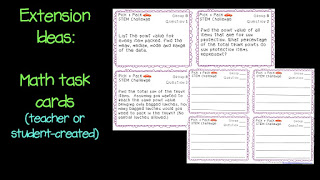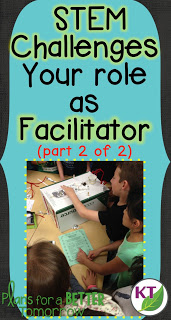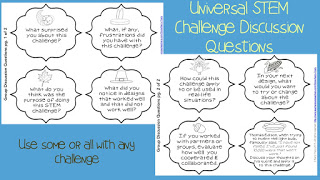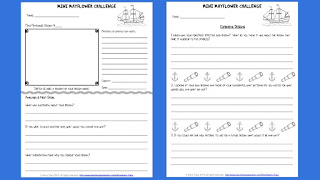This is part 2 of your role as facilitator (for part 1, click here).
Below you’ll find my “Dos and Don’ts” for what to do after the students are done building. The video offers full details, and there is a written summary below. However, if you prefer to read, you’ll find the video transcribed at the end of this post.
Your Role as Facilitator, part 2:
Summarized thoughts:
Things to do when the challenge ends:
1. Gallery walk
Have students line up and snake through the room, quietly observing designs. Note: have them keep hands folded behind backs so they remember not to touch! This should be short: ~2 min.
2. Q & A session
Give each group time to present their designs. Typically, I give 30 – 60 seconds to describe the design, followed by Q&A. At the beginning of the year, I ask most of the questions and gradually pull back to where I ask almost none, letting the students take over.
Consider having each group call on someone from the class to ask one or two questions. This ensures each member has a chance to practice oral communication skills and take ownership of the design.
Examples of what to ask are in the embedded video.
3. Broader discussion (whole class or in groups)
I have a set of eight questions I like to use whole-class, or in groups, to help students reflect on how well they worked, successes & failures, etc. See the video for details.
4. Record & reflect on first iteration
It’s important that every student record & reflect individually on the designs, even when they work in groups. This information should be used to inform modifications for the second iteration, not as a replacement. You can also gather valuable information from their reflections to help you decide whether to tweak materials or the criteria & constraints prior to the next round. See the video for details.
5. Extension activities
The specifics of a challenge will determine the extension activities which can be used to review or introduce new concepts across multiple subject areas.
That said, there are a few standards that work with most challenges:
 – Ask/answer math questions related to the designs.
– Ask/answer math questions related to the designs.
– Create process flow maps for building designs.
– Research
– Writing
– Scientific inquiry/experiments
See the video for more details.
As always, reach out in the comments or by email if there’s a specific question or topic you’d like me to address. 🙂
Credits:
Video Transcription
the Facilitator During STEM Challenges. I did Part One last week and I will
either link that here somewhere or in the description below so if you haven’t
watched that, stop this, go back and watch that first.
happens once you call time and the students are done building their first
iteration. There are a couple different options here. The first one I like to
do whenever there is time is a gallery walk so I will have the students all
come get in a line and no matter how old they are, no matter what age, I always
have them put their arms behind their back and hold their elbows so they don’t
reach out and touch somebody’s design. It’s definitely saved a lot of towers
and I highly recommend it.
is have a Q&A session. For the first several STEM challenges that you have
you’re going to want to do this whole class so that students get the modeling
and understand what types of questions they should be asking each other.
have the groups bring up their design to the front of the class while the
others are sitting. More frequently they’re not really very portable unless you
actually put that into your Criteria and Constraints list so we usually
actually will just walk around to each station, to each group. I usually give a
group about 30 seconds to just talk about their designs and then after that we
start the Q&A. If it’s your very first challenge or one of the very first
challenges, you’ll probably do most of the initial asking and then eventually
you’ll start to pull back and you’ll let the other students ask the questions
instead of you. You’ll ask fewer and fewer as time goes by.
sure that every student gets practice with their oral communication standards
is to allow each student in a group that is presenting to call on a student in
the class to ask a question and answer that question.
let’s take a look at a few examples that are pretty universal across STEM
challenges.
that’s why you see the clip art that you do. The first seven of these are my
standard questions and the eighth is always a new quote that I’ve selected in
themes of hard work, perseverance, failure, luck, etc. The question that says, what
do you think is the purpose of doing the STEM challenge, actually came from my
friend, Mr. Reagen, and I love it so I use it now all the time. It’s really
fascinating to hear what they come up with.
My favorite though is to give groups five to ten minutes to discuss these
questions within their group and then I like to call on volunteers or do the
thing where you pull out sticks with names on it for people that share out of a
couple of their answers, whole class.
groups will record and reflect upon their first iteration of the design. Let’s
go do an example of what I would use in my class.
each student to fill out these forms. You can send them home as homework if you
like but I usually have them do this in class. Make sure you don’t use this is
a replacement for a second iteration. This reflection should serve as the
foundation, not a substitution for modifying designs.
call it a day. They’ve already accomplished quite a bit. The following days you
might want to add some extension activities and I’ve got a few examples of some
things you can do for those. Let’s take a look.
specific challenge but there are a few things that work with most challenges.
The first is math questions, or task cards. Have students create math questions
that can be answered by their design data. The example shown is from one of my
challenges called, Pick and Pack, in which students pack a trunk with items of
different point values. You can create task cards with your own questions or
give the students task-card templates to create their own which is my
preference. Then you can use those to play a game of SCOOT or you can save and
store copies of their questions and data for math centers, early finishers, sub
days, etc.
Another idea is for students to create
process flows for the building of their designs. They can turn these into
paragraphs or even exchange with other teams to try and build each other’s
designs based on the process flow. This is kind of like that activity where you
make a peanut butter and jelly sandwich based on the directions you’re given
and that can be really fun and also a great way to work on precise writing.
to research related topics or conduct scientific inquiries or experiments and
there are usually more opportunities for writing if you look. Basically look
for all your cross-curricular connections for both new and review concepts,
then whittle it down to the time you have available.
are almost endless. You just want to take a look at what you can use to review,
to research, to introduce new concepts across all your subject areas and it can
turn into quite a little rabbit hole. You don’t have to do extensions with
every single STEM challenge but when you can it’s a nice jumping off point
because you know the students already have prior knowledge.
really sit back and examine what you could do for extension activities, you
might want to take a look at what’s already out there. So take a look at
Odyssey of the Mind. They have some great STEM challenges. Take a look at
Teachers Pay Teachers, shameless plug. I do have freebies.
or not, you do always want to do the second iteration if you can whenever
possible. So one of the things that I would recommend is before doing the
second iteration, read whatever reflections the students had on their first
iteration. If you ask the same kinds of questions that I do, some of the things
that I really like to look at are, what materials did they say they’d really
like to have if they were going to build again, and sometimes I actually throw
some of those materials in there because a lot of times they were a good idea.
as … I’ll tweak sometimes the Criteria and Constraints. If maybe I made the
challenge a little too easy the first time, I might make it a little bit more
difficult the next by adding a new constraint or new criterion.
the Facilitator. Make sure you tune in next week. I’m going to be covering all
things materials. How to get them, what to use, a little bit of cost comparison
and maybe a few other things.





